By manipulating and detecting nuclear spins in a tiny floating diamond, scientists have reported a record-long spin coherence time for a levitated system.
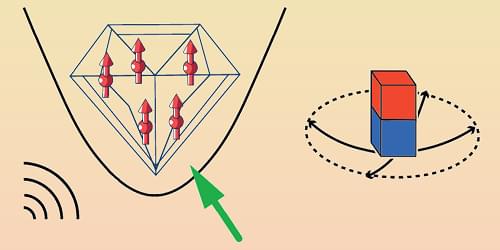

By manipulating and detecting nuclear spins in a tiny floating diamond, scientists have reported a record-long spin coherence time for a levitated system.

Contrary to conventional wisdom, a lattice of engineered nanoparticles called meta-atoms can have a chiral optical response even when each meta-atom is not chiral.
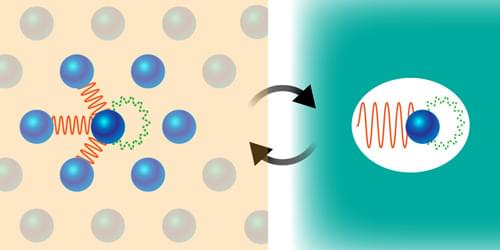
A new framework that embeds electrons in a surrounding bath captures nonlocal correlation effects that are relevant to metals, semiconductors, and correlated insulators.
Searching for new types of superconductors, magnets, and other useful materials is a bit like weaving a tapestry with threads of many different colors. The weaver selects a short-range (local) pattern for how the individual threads intertwine and at the same time chooses colors that will give an overall (nonlocal) mood. A materials scientist works in a similar way, mixing atoms instead of threads, trying to match the motion of their electrons—their correlations—on both local and nonlocal scales. Doing so by trial-and-error synthesis is time intensive and costly, and therefore numerical simulations can be of huge help. To contribute to bridging computations to material discovery, Jiachen Li and Tianyu Zhu from Yale University have developed a new approach that treats local and nonlocal electronic correlations on an equal footing [1] (Fig. 1). They demonstrated their method by accurately predicting the photoemission spectra of several representative materials.

Low-frequency radio observations could allow researchers to distinguish among several dark matter models, thanks to dark matter’s influence on the early Universe.
The profusion of dark matter candidates reflects how easy it is for any of them to explain the current large-scale structure of the Universe. Decisive clues about dark matter’s true nature are more likely to appear at earlier epochs. Unfortunately, those clues are harder to observe. Now Jo Verwohlt of the University of Copenhagen in Denmark and her collaborators have shown how a deeply redshifted hydrogen line could unmask dark matter [1]. To do so, they also identified confounding signatures from regular, baryonic matter.
Some theories posit that dark matter interacts with so-called dark radiation. In the dense early Universe, the heating effect of that interaction could have been enough for large concentrations of dark matter known as halos to temporarily and repeatedly resist gravitational collapse. Termed dark acoustic oscillations (DAOs), these cycles of expansion and collapse would have quickly died out. But before they did, they could have affected the onset of “cosmic dawn.” That’s when the first galaxies formed from primordial gas drawn into the halos.
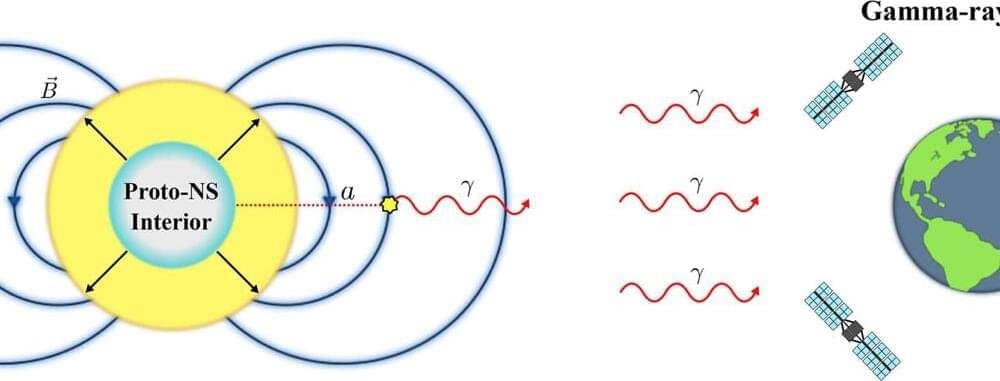
The search for the universe’s dark matter could end tomorrow—given a nearby supernova and a little luck. The nature of dark matter has eluded astronomers for 90 years, since the realization that 85% of the matter in the universe is not visible through our telescopes. The most likely dark matter candidate today is the axion, a lightweight particle that researchers around the world are desperately trying to find.
Astrophysicists at the University of California, Berkeley, now argue that the axion could be discovered within seconds of the detection of gamma rays from a nearby supernova explosion. Axions, if they exist, would be produced in copious quantities during the first 10 seconds after the core collapse of a massive star into a neutron star, and those axions would escape and be transformed into high-energy gamma rays in the star’s intense magnetic field.
Such a detection is possible today only if the lone gamma-ray telescope in orbit, the Fermi Gamma-ray Space Telescope, is pointing in the direction of the supernova at the time it explodes. Given the telescope’s field of view, that is about one chance in 10.
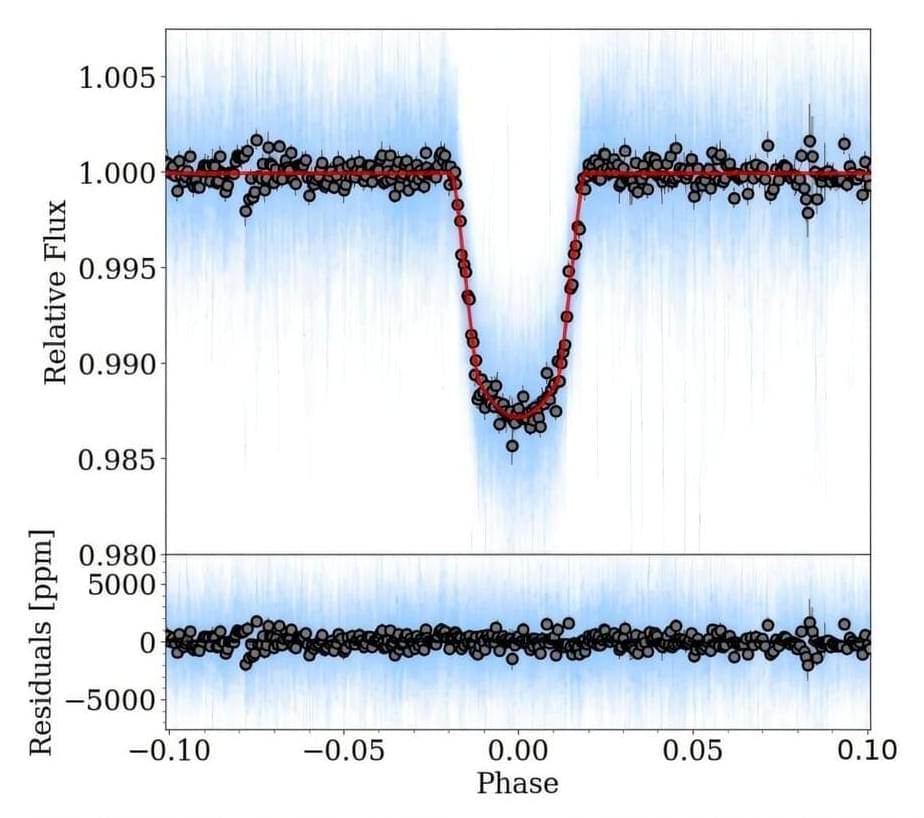
An international team of astronomers has reported the detection of a new super-Jupiter exoplanet as part of the Next Generation Transit Survey (NGTS). The newfound alien world, located some 1,430 light years away, is nearly four times as massive as Jupiter and is estimated to be only millions of years old. The discovery was detailed in a paper published November 13 on the pre-print server arXiv.
NGTS is a wide-field photometric survey focused mainly on the search for Neptune-sized and smaller exoplanets transiting bright stars. The project uses an array of small, fully robotic telescopes at the Paranal Observatory in Chile, operating at red-optical wavelengths. It uses the transit photometry method to find new exoworlds, which precisely measures the dimming of a star to detect the presence of a planet crossing in front of it.
Now, a group of astronomers led by Douglas R. Alves has found another extrasolar world with NGTS photometry. The new planet was identified around NGTS-33—a fast-rotating massive hot star.

Researchers at Rice University have found a new way to improve a key element of thermophotovoltaic (TPV) systems, which convert heat into electricity via light. Using an unconventional approach inspired by quantum physics, Rice engineer Gururaj Naik and his team have designed a thermal emitter that can deliver high efficiencies within practical design parameters.
The research could inform the development of thermal-energy electrical storage, which holds promise as an affordable, grid-scale alternative to batteries. More broadly, efficient TPV technologies could facilitate renewable energy growth—an essential component of the transition to a net-zero world. Another major benefit of better TPV systems is recouping waste heat from industrial processes, making them more sustainable. To put this in context, up to 20–50% of the heat used to transform raw materials into consumer goods ends up being wasted, costing the United States economy over $200 billion annually.
TPV systems involve two main components: photovoltaic (PV) cells that convert light into electricity and thermal emitters that turn heat into light. Both of these components have to work well in order for the system to be efficient, but efforts to optimize them have focused more on the PV cell.
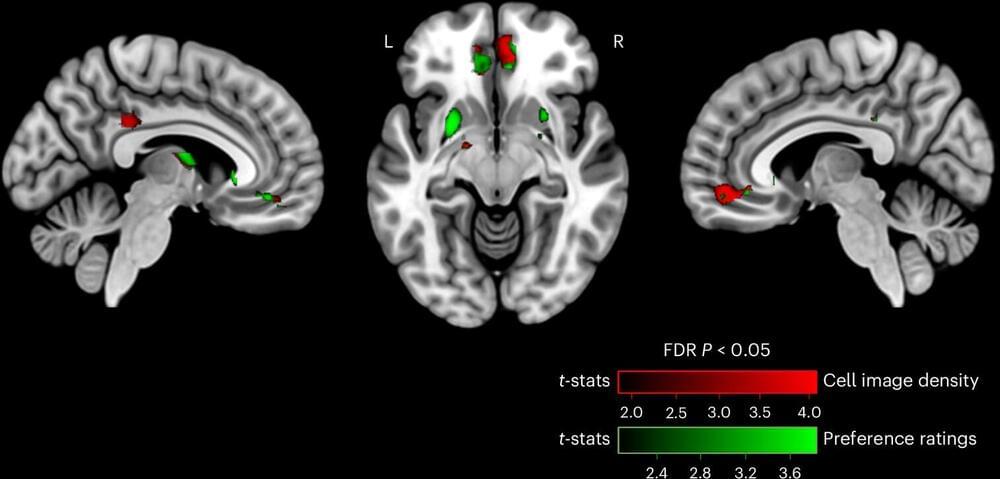
Urbanization, the process by which cities and towns expand in size and population, is rapidly advancing globally, and the percentage of people living in urban environments has increased from 33% in 1960 to 57% in 2023.
Now, researchers from Michigan State University are the first to measure brain activity to make predictions that could help inform enhanced urban planning and design that addresses the well-being of residents and visitors.
Dar Meshi, an associate professor in the Department of Advertising and Public Relations and director of the Social Media and Neuroscience Lab at MSU, led the study, which was recently published in the journal Nature Cities and included collaborators from the University of Lisbon in Portugal. Together, they found that the brain’s reward system can shape human behavior within urban environments and aid in designing cities that promote sustainable living.

Researchers led by Takuzo Aida at the RIKEN Center for Emergent Matter Science (CEMS) have developed a new durable plastic that won’t pollute our oceans. The new material is as strong as conventional plastics and biodegradable, but what makes it special is that it breaks down in seawater. The new plastic is therefore expected to help reduce harmful microplastic pollution that accumulates in oceans and soil and eventually enters the food chain.
The experimental findings are published Nov 22 in Science.
Scientists have been trying to develop safe and sustainable materials that can replace traditional plastics, which are non-sustainable and harm the environment. While some recyclable and biodegradable plastics exist, one big problem remains. Current biodegradable plastics like PLA often find their way into the ocean where they cannot be degraded because they are water insoluble. As a result, microplastics—plastic bits smaller than 5 mm—are harming aquatic life and finding their way into the food chain, including our own bodies.
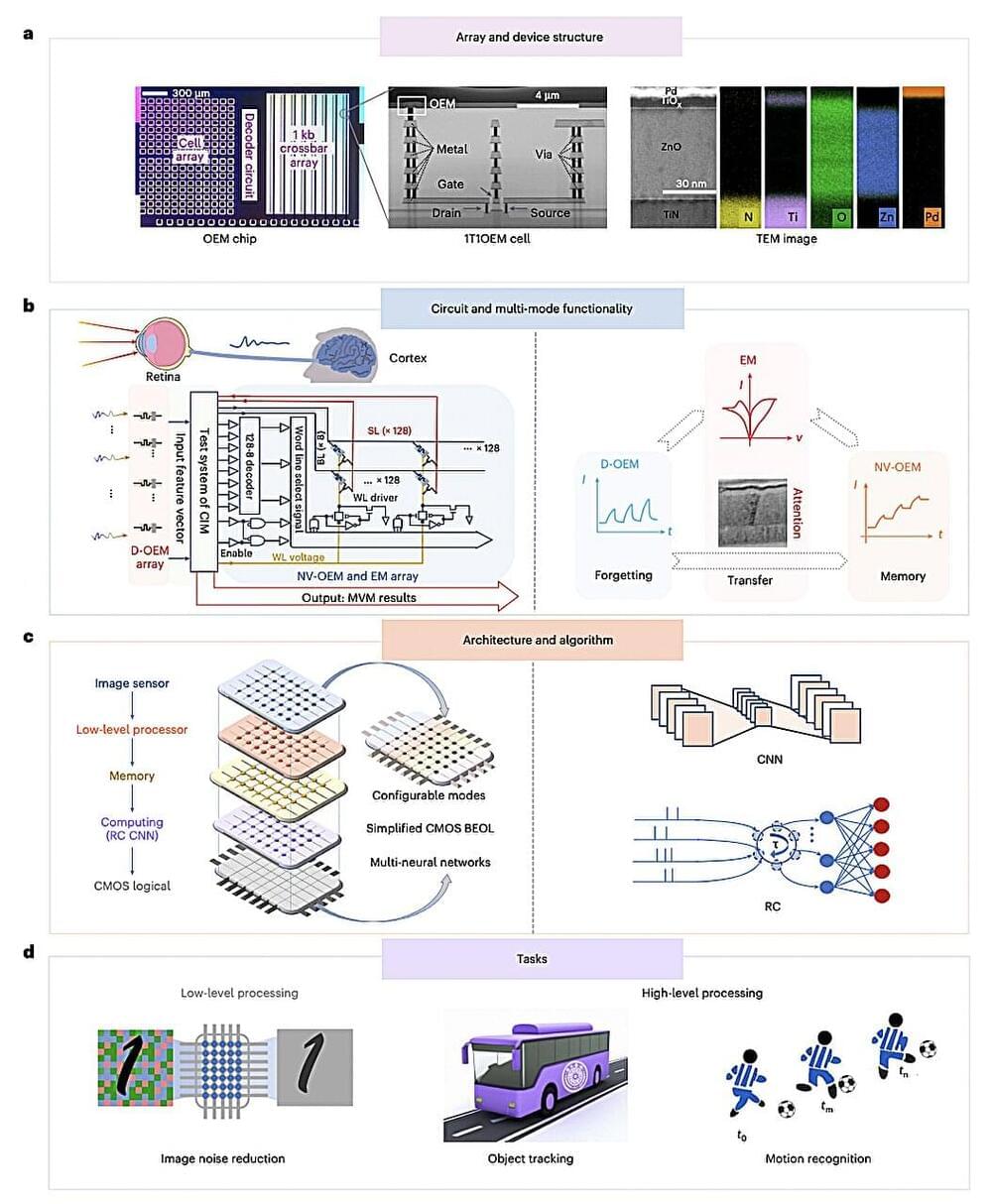
Researchers at Karolinska Institutet and Karolinska University Hospital have developed a microscopy method that enables detailed three-dimensional (3D) RNA analysis at cellular resolution in whole intact mouse brains. The new method, called TRISCO, has the potential to transform our understanding of brain function, both in normal conditions and in disease, according to a new study published in Science.
Despite great advances in RNA analysis, linking RNA data to its spatial context has long been a challenge, especially in intact 3D tissue volumes. The TRISCO method now makes it possible to perform three-dimensional RNA imaging of whole mouse brains without the need to slice the brain into thin sections, which was previously necessary.
“This method is a powerful tool that can drive brain research forward. With TRISCO, we can study the complex anatomical structure of the brain in a way that was previously not possible,” says Per Uhlén, professor at the Department of Medical Biochemistry and Biophysics, Karolinska Institutet, and the study’s last author.